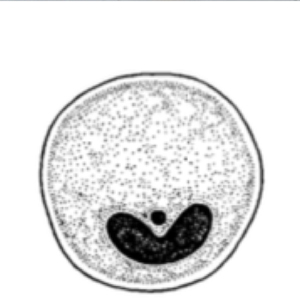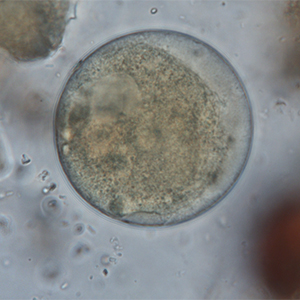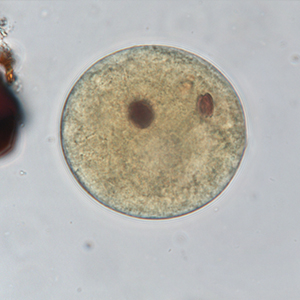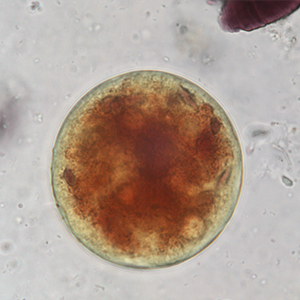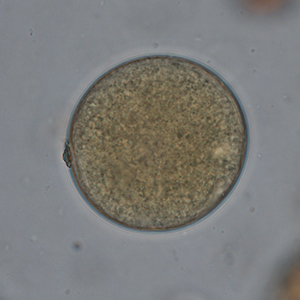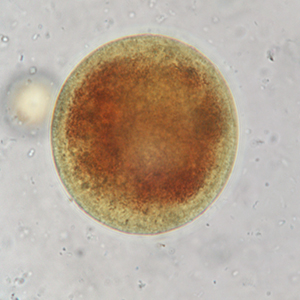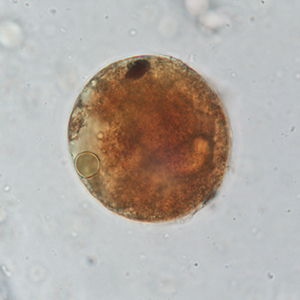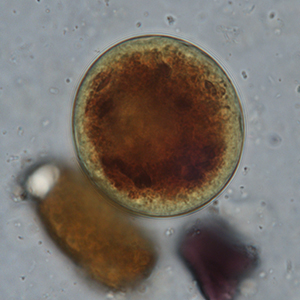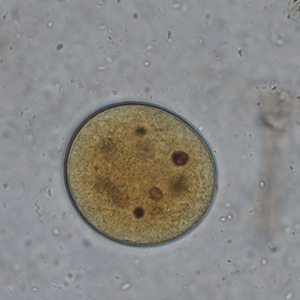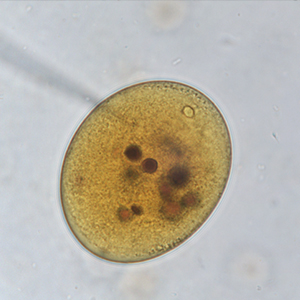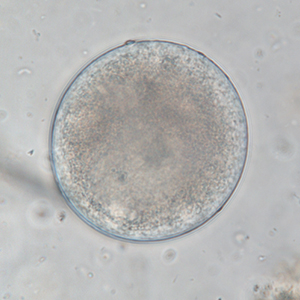Balantidium coli is a ciliated protozoa which affects the cecum and colon of a large number of mammals (suids, canids, ruminants, equids, primates). It is one the few ciliated species of protozoa reported in non-human primates, along with Troglodytella abrassarti and Troglodytella gorillae, which are only found as trophozoites in these species (Strait et al., 2012).
Epidemiology
Old and New World Monkeys, as well as Apes can be affected by Balantidium coli. In fact, it has been described in capuchin monkeys (Cebus spp.), lion tamarins (Leontopithecus spp.), squirrel monkeys (Saimiri spp.), howler monkeys (Alouatta spp.), spider monkeys (Ateles spp.), baboons (Papio spp.), rhesus macaques (Macaca mulatta), crab-eating macaques (Macaca fascicularis), orangutans (Pongo spp.), chimpanzees (Pan spp.) (Strait et al., 2012; Barbosa et al., 2015a; Barbosa et al., 2015b). Its geographical distribution is cosmopolitan.
Description
Parasitic cysts are spherical to ovoid and measure 50 to 100 µm in diameter. Their outer membrane is thick, and they have a granulomatous content. A macronucleus and a micronucleus are present, but often difficult to visualize (Strait et al., 2012). Lugol staining allows the visualization of some organelles, which are colored in dark brown. It also allows the coloration of the outer membrane in brown and of the inside of the cyst in cream.
Differential diagnosis
Balantidium coli cysts are normally easy to identify as they have quite a specific appearance.
Clinical significance
Balantidium coli infection can cause weight loss, anorexia, muscle weakness and digestive symptoms (like liquid diarrhea, tenesmus and rectal prolapse) (Strait et al., 2012; Calle & Joslin, 2015; Murphy, 2015). In few cases, it can even be fatal (Strait et al., 2012).
Prophylaxis and treatment
As Balantidium coli is transmissible to humans, hygienic measures need to be taken in case of diagnosis.
Various treatments have been described to treat Balantidium coli infections in non-human primates, namely:
- Metronidazole: 11.7-50 mg/kg PO q8-12h during 5 to 10 days (Strait et al., 2012; Calle & Joslin, 2015);
- Tetracycline: 13 mg/kg PO q8h during 10 to 14 days (Strait et al., 2012);
- Diiodohydroxyquinoline: 13 mg/kg PO q8h during 14 to 21 days (Strait et al., 2012);
- Paromycin: 10-20 mg/kg PO q12h during 5 to 10 days (Calle & Joslin, 2015).
